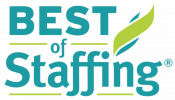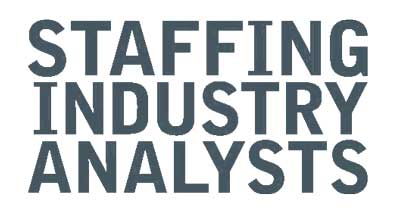Creating A Workforce Ecosystem: Enhancing Workforce Management
Given the unpredictability of the local, national and global economies in recent years, companies are starting to change the way they manage their internal workforce and their contingent workers. Rather than managing these two as separate units, they are embracing the concept of a “workforce ecosystem.”
This ecosystem approach is gaining traction as it provides a way to streamline operations, enhance flexibility, and improve overall workforce performance. Let’s explore the concept of a workforce ecosystem, the steps to integrate it into your organization, the benefits it offers, potential challenges, and the tools and technologies that can aid in its implementation.
An Introduction To The Workforce Ecosystem
A traditional approach to workforce management involves treating a team of core employees that can be supplemented by the work of and contingent employees during periods of high demand or when specialized skills are required. A workforce ecosystem, however, is a more holistic approach to workforce management that integrates core employees and contingent workers into a unified system. It’s a shift from siloed management to a more interconnected and collaborative model.
Some of the benefits of this holistic approach to workforce management include:
- Enhanced Collaboration: A workforce ecosystem encourages collaboration and communication between core employees and contingent workers. This fosters a sense of unity within the workforce.
- Improved Agility: Closing the bridge between the contingent workforce and the core workforce allows organizations to respond more quickly to changing demands and market conditions by seamlessly integrating contingent labor when needed.
- Optimized Resource Allocation: By having a unified view of all workers, organizations can allocate resources more efficiently.
- Increased Productivity: The interconnected workforce can lead to higher productivity as employees can access the right talent at the right time.
The Integration Process: Creating a Workforce Ecosystem
To create a workforce ecosystem within your organization, several key steps need to be taken. Here’s a breakdown of the integration process:
Assessing Your Current Workforce Structure
Begin by evaluating your current workforce structure. Understand the roles and responsibilities of both your core employees and contingent workers. Identify the areas where there is potential for integration. This assessment is a crucial starting point as it will help you pinpoint where changes are needed.
Identifying Areas for Integration
Once you’ve assessed your workforce, identify specific areas where integration is most beneficial. This could include cross-training programs, shared workspaces, or collaborative project teams. These integrated areas will serve as the foundation for your workforce ecosystem.
Implementing Technology and Tools for Collaboration
Technology plays a crucial role in fostering collaboration within a workforce ecosystem. Implement tools and platforms that allow employees and contingent workers to communicate, share information, and collaborate effectively. This might include project management software, communication apps, and cloud-based platforms.
Employee and Contingent Worker Engagement
Engagement is key to the success of a workforce ecosystem. Employees and contingent workers should feel involved, valued, and aligned with the organization’s goals. Provide training and onboarding processes that help integrate contingent workers seamlessly into the company culture. Recognize and reward contributions from both core and contingent workers.
The Benefits of a Workforce Ecosystem
The transition to a workforce ecosystem offers numerous benefits to organizations:
- Improved Workforce Flexibility and Adaptability: A workforce ecosystem provides the flexibility to scale your workforce up or down based on your needs. During peak demand periods, you can easily bring in contingent workers, and during slower times, you can scale back.
- Enhanced Talent Retention and Attraction: Employees are more likely to stay with an organization that values their contributions and offers opportunities for growth. Contingent workers, when integrated successfully, can also become more loyal to your organization.
- Increased Efficiency and Output: Streamlined processes and improved collaboration lead to increased efficiency. The right people are available when needed, reducing bottlenecks and delays.
- Cost Savings and Reduced Administrative Burden: By integrating your workforce, you can reduce administrative overhead and lower costs associated with hiring and onboarding new contingent workers repeatedly. This can result in significant cost savings over time.
Challenges and Considerations of a Workforce Ecosystem
While the concept of a workforce ecosystem holds great promise, it is not without its challenges. Resistance to change can be a significant roadblock when transitioning to a workforce ecosystem. Employees and managers may be hesitant to embrace new processes and technologies. Effective change management strategies are essential to overcome these barriers.
Additionally, compliance with labor laws and regulations becomes more complex when managing a diverse workforce. Organizations must navigate legal challenges, such as classifying workers correctly, providing benefits, and ensuring equal treatment.
Integrating contingent workers into the organizational culture can also be a significant challenge. It may require a cultural shift, which can be met with resistance, and meeting the needs and expectations of both core employees and contingent workers can feel like an uphill battle.
Building a Roadmap for Successful Integration
Creating a roadmap for integrating a workforce ecosystem is a critical component of the transition process. A well-structured roadmap not only serves as a guide for implementation but also ensures that your integration efforts are aligned with your organization’s strategic goals. Here are the key elements to consider when building a roadmap:
- Define Clear Objectives: Start by setting clear and specific objectives for your integration efforts. What are the desired outcomes of your workforce ecosystem? Is it improved collaboration, increased efficiency, or enhanced workforce flexibility? Define these objectives so that everyone involved understands what you aim to achieve.
- Assess Your Baseline: Before you can map out the path ahead, it’s essential to have a comprehensive understanding of your current workforce structure. Conduct a detailed assessment to identify the roles, responsibilities, and skills of both core employees and contingent workers. This will serve as a baseline for your integration efforts.
- Identify Integration Areas: Based on your assessment, pinpoint the areas within your organization where integration is most beneficial. This might include shared project teams, cross-training programs, or collaborative workspaces. Consider which of these areas align most closely with your defined objectives.
- Develop a Timeline: Time is a critical factor in any integration process. Create a realistic timeline that outlines the key milestones and deadlines for your integration efforts. Ensure that the timeline accommodates any specific seasonal or operational considerations unique to your industry.
- Allocate Resources: Determine the necessary resources to support your integration. This includes staffing, technology, and budgetary allocations. Ensure that you have the personnel and tools needed to execute the plan effectively.
- Assign Responsibility: Clearly define roles and responsibilities within your organization. Identify who will be responsible for different aspects of the integration. This could include HR, IT, department heads, and external consultants, if necessary.
- Communicate Effectively: Effective communication is key to managing change within an organization. Create a communication plan that keeps all stakeholders informed about the integration process. Share regular updates, milestones achieved, and any adjustments to the plan.
- Review and Adapt: An agile approach is essential for any successful integration. Regularly review progress against your objectives and adapt your roadmap as needed. Be open to feedback from employees, assess KPIs, and make adjustments to ensure that you stay on track.
- Measure Success: In your roadmap, clearly outline the key performance indicators (KPIs) you will use to measure the success of your integration efforts. These might include improved productivity, reduced administrative costs, increased employee satisfaction, and enhanced collaboration. Regularly assess these KPIs to gauge the effectiveness of your workforce ecosystem.
A well-structured roadmap is not static; it’s a dynamic tool that guides you through the integration process. It helps you stay focused on your objectives, allocate resources efficiently, and ensure that your integration efforts align with your organization’s strategic goals.
Unlocking the Power of the Workforce Ecosystem with SelecSource
In the changing landscape of workforce management, the concept of a workforce ecosystem offers organizations a way to streamline operations, improve flexibility, and enhance overall workforce performance. It’s a dynamic approach that brings together core employees and contingent workers in a unified system, fostering collaboration and unlocking the full potential of your workforce.
At SelecSource, we understand the power of workforce ecosystems. Our commitment to providing efficient workforce solutions aligns perfectly with the concept of integrating core and contingent workforces to meet your staffing needs. We specialize in temporary staffing, temporary-to-hire, direct hire, payroll services, on-site management, and CPU Workforce Management. Our proven methods and technology solutions are designed to help your organization thrive in the modern work environment.
Are you ready to take the next step in optimizing your workforce? Contact SelecSource today and discover how our workforce ecosystem expertise can benefit your organization. Let us help you build a flexible, efficient, and collaborative workforce that drives success in a rapidly evolving business world.








